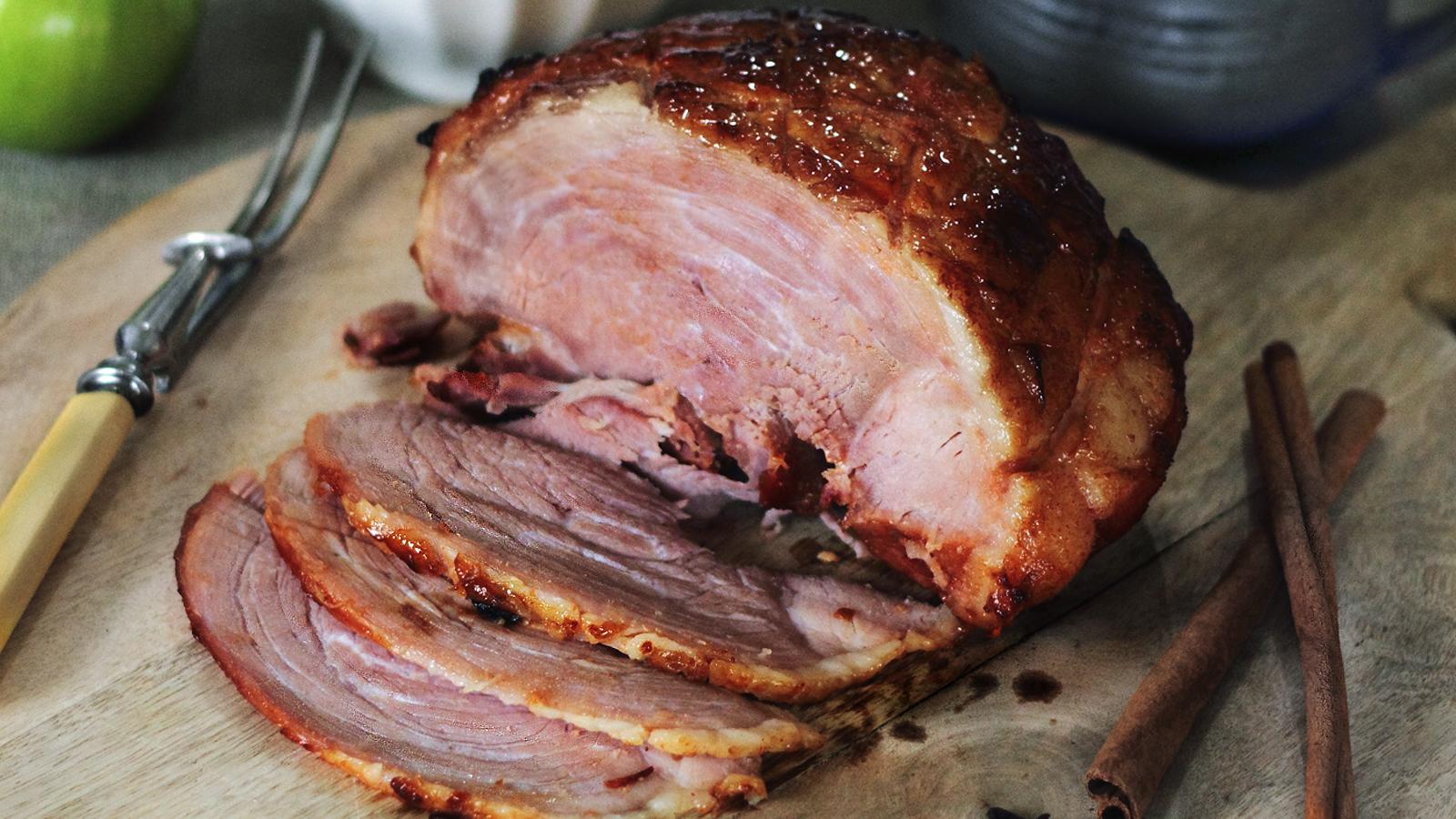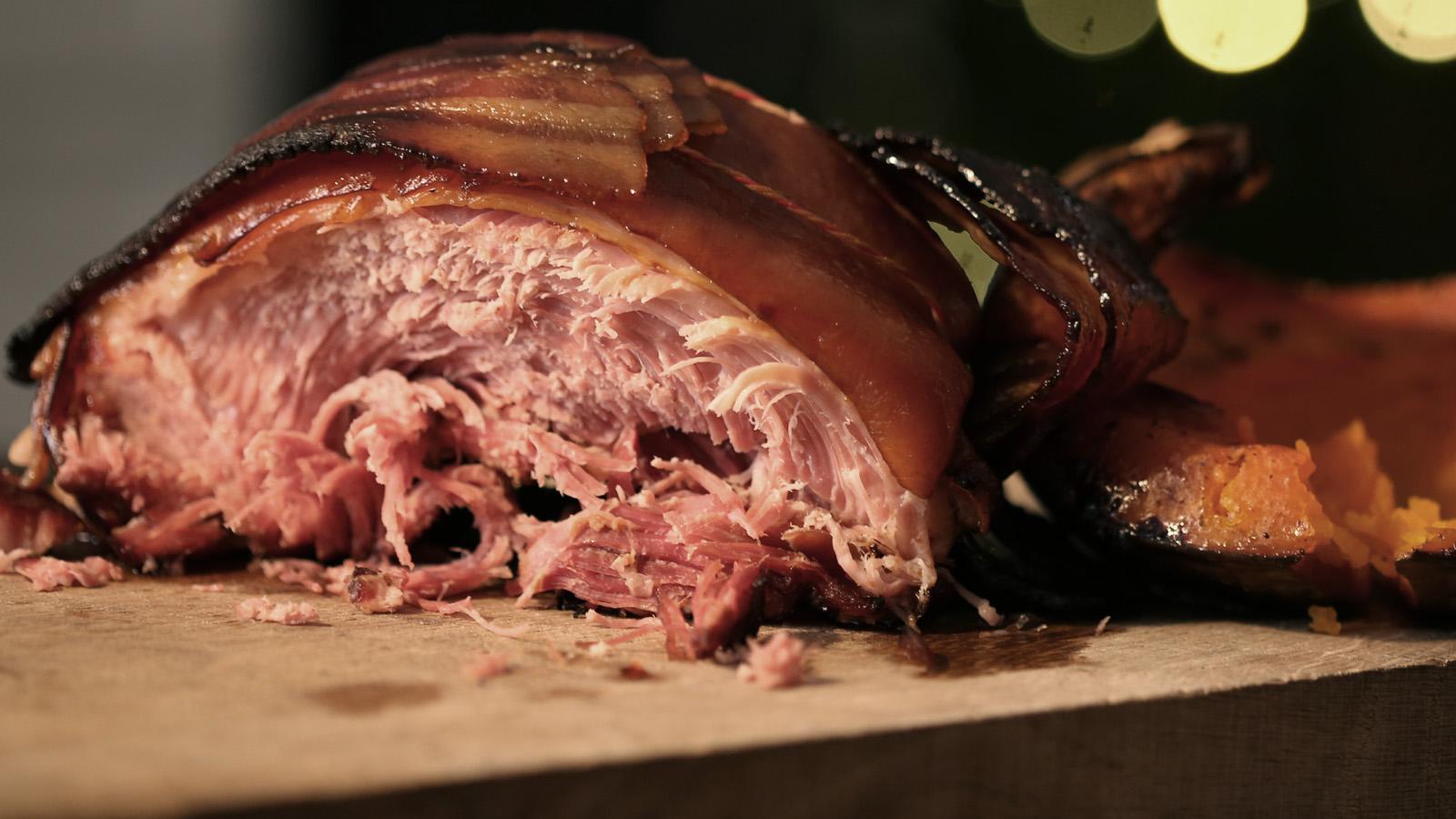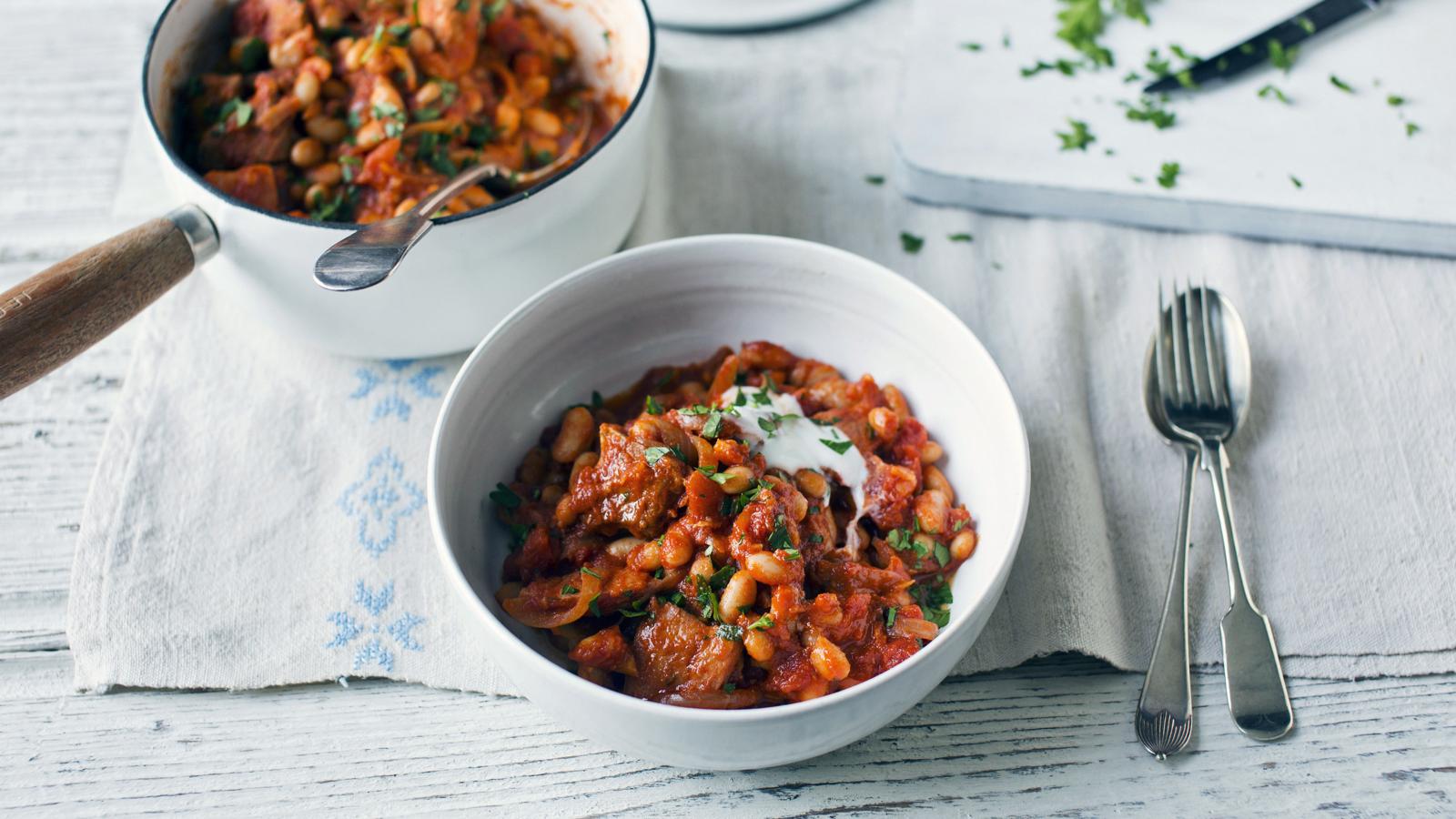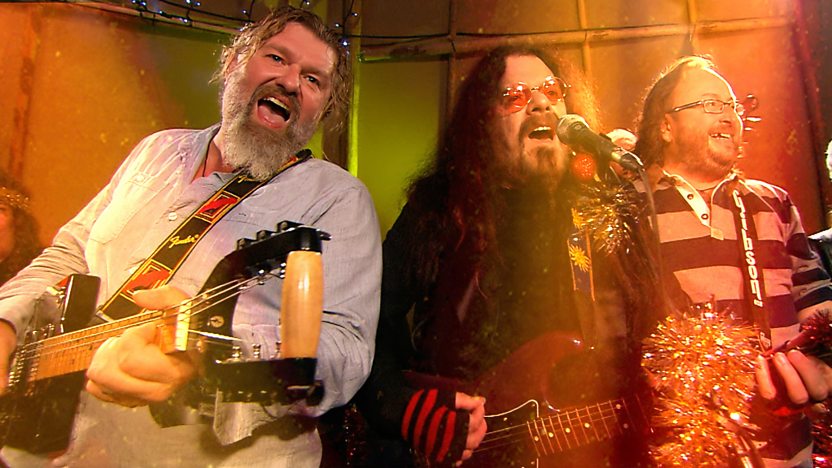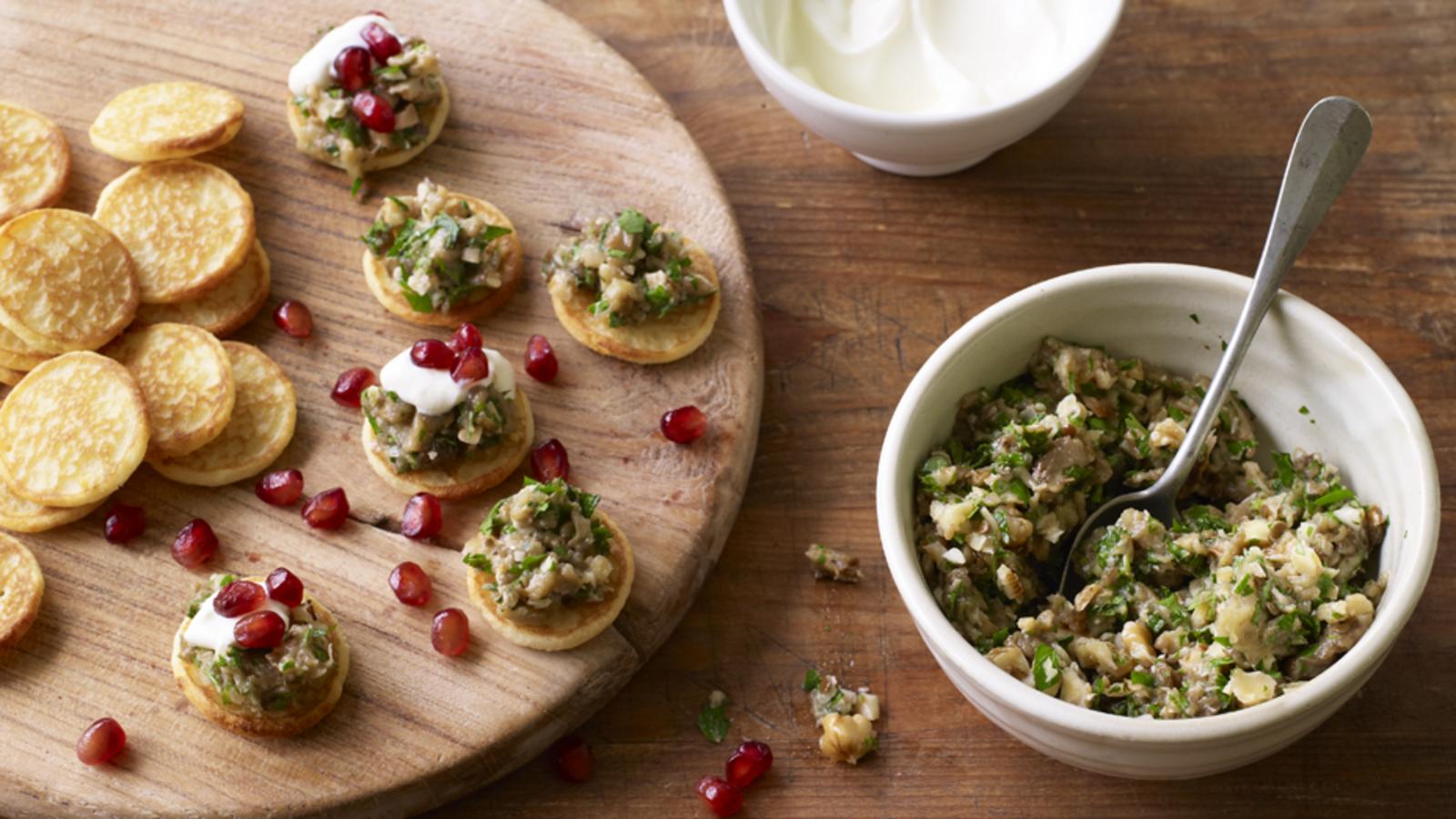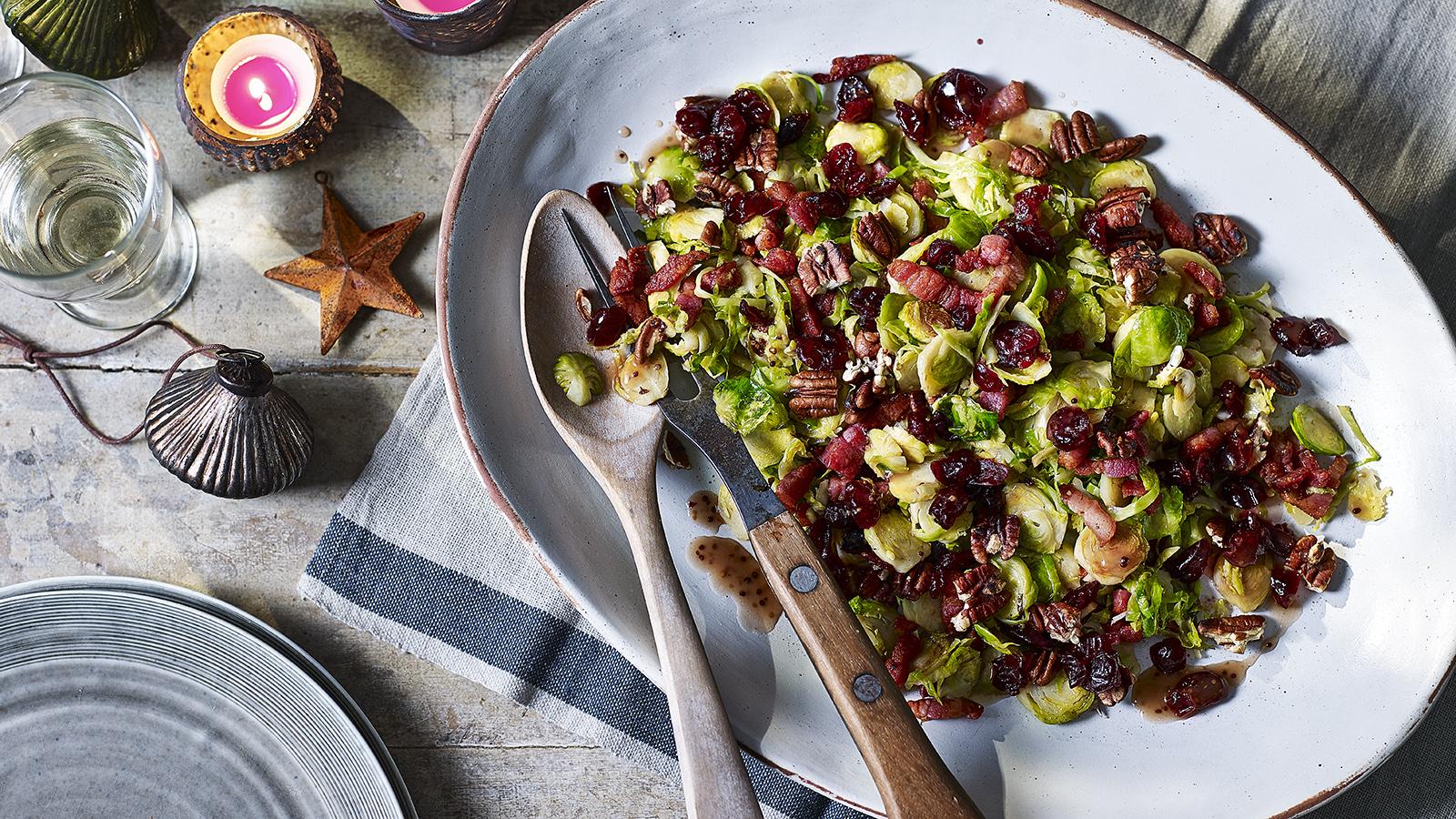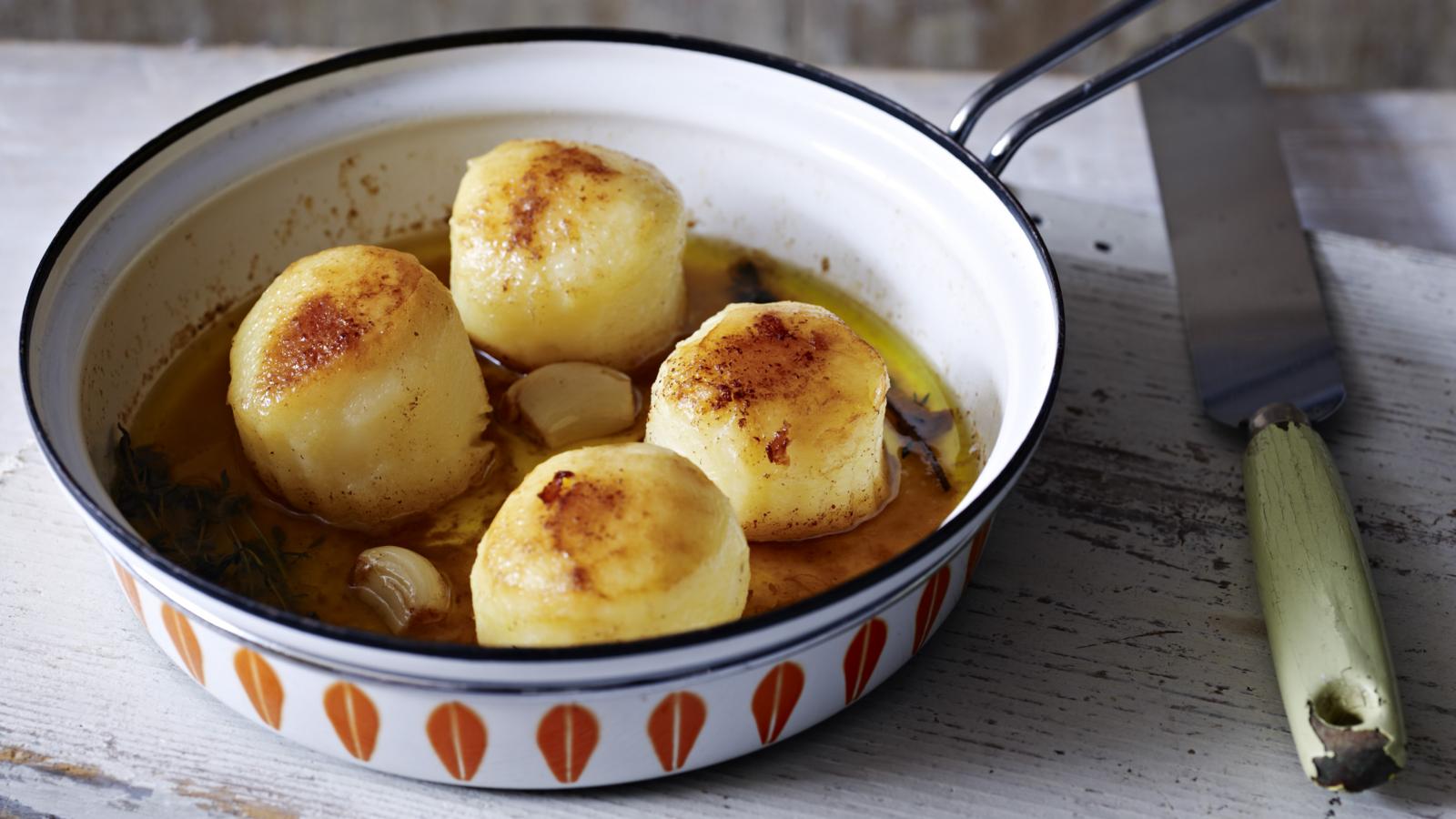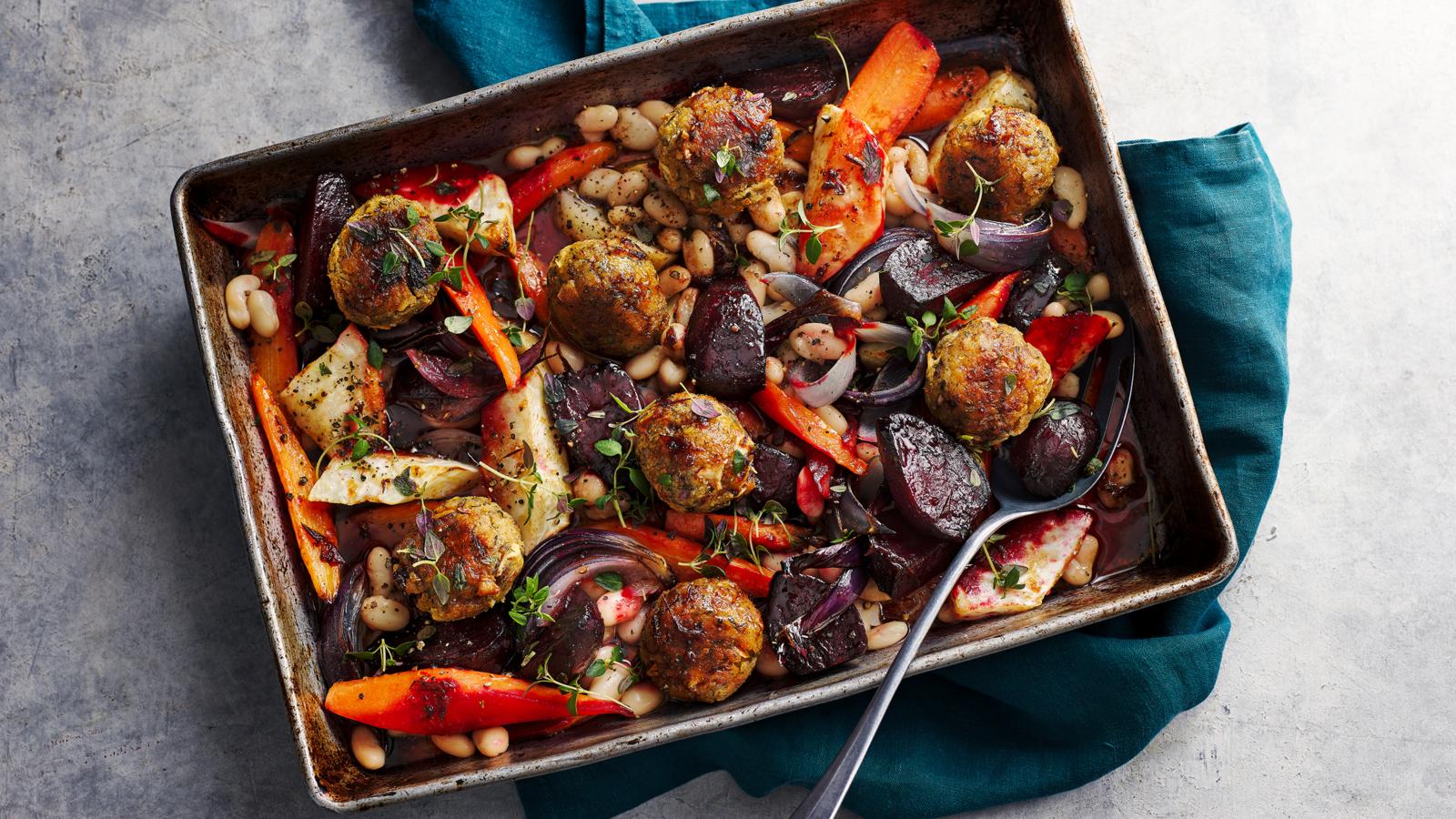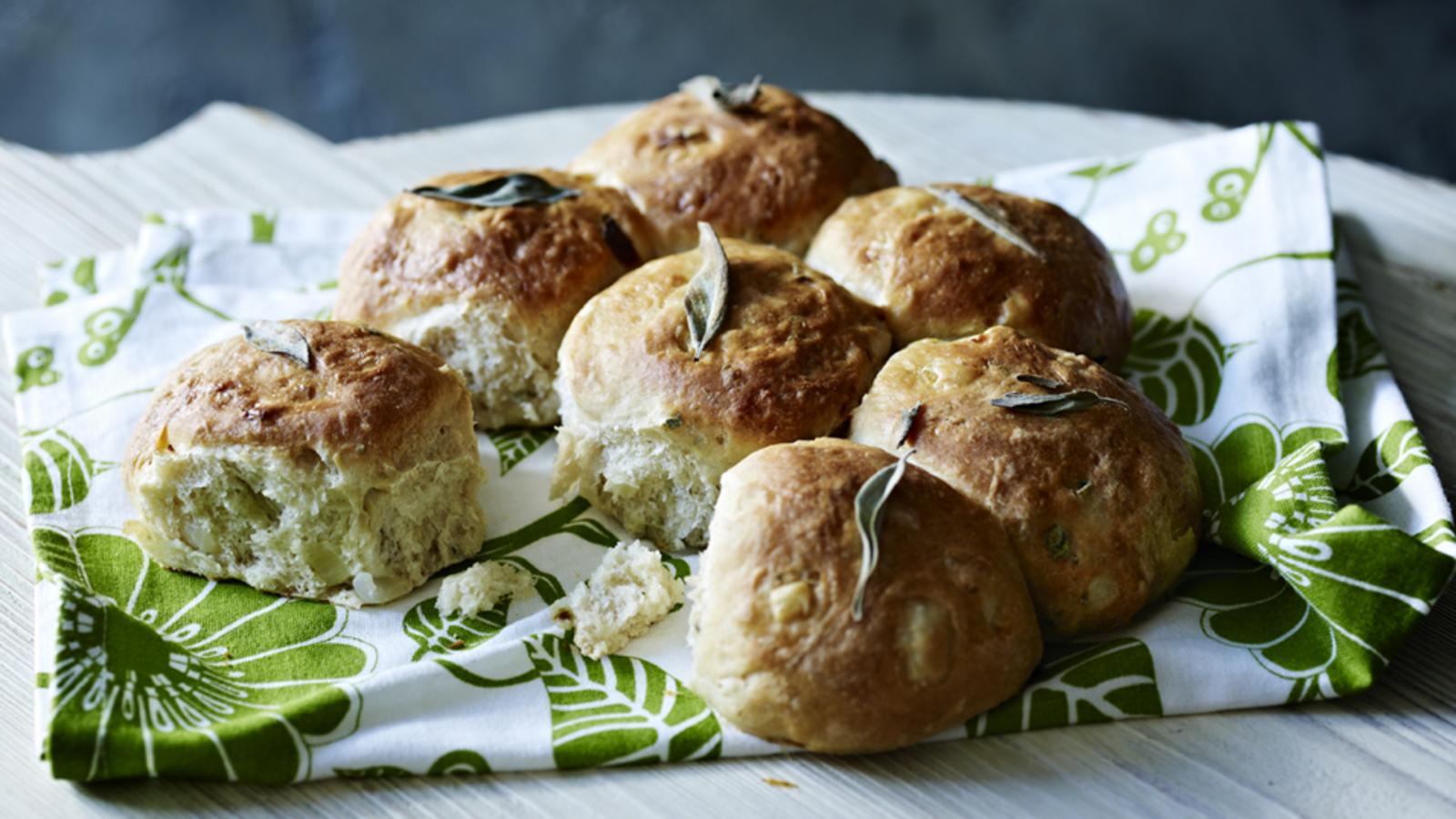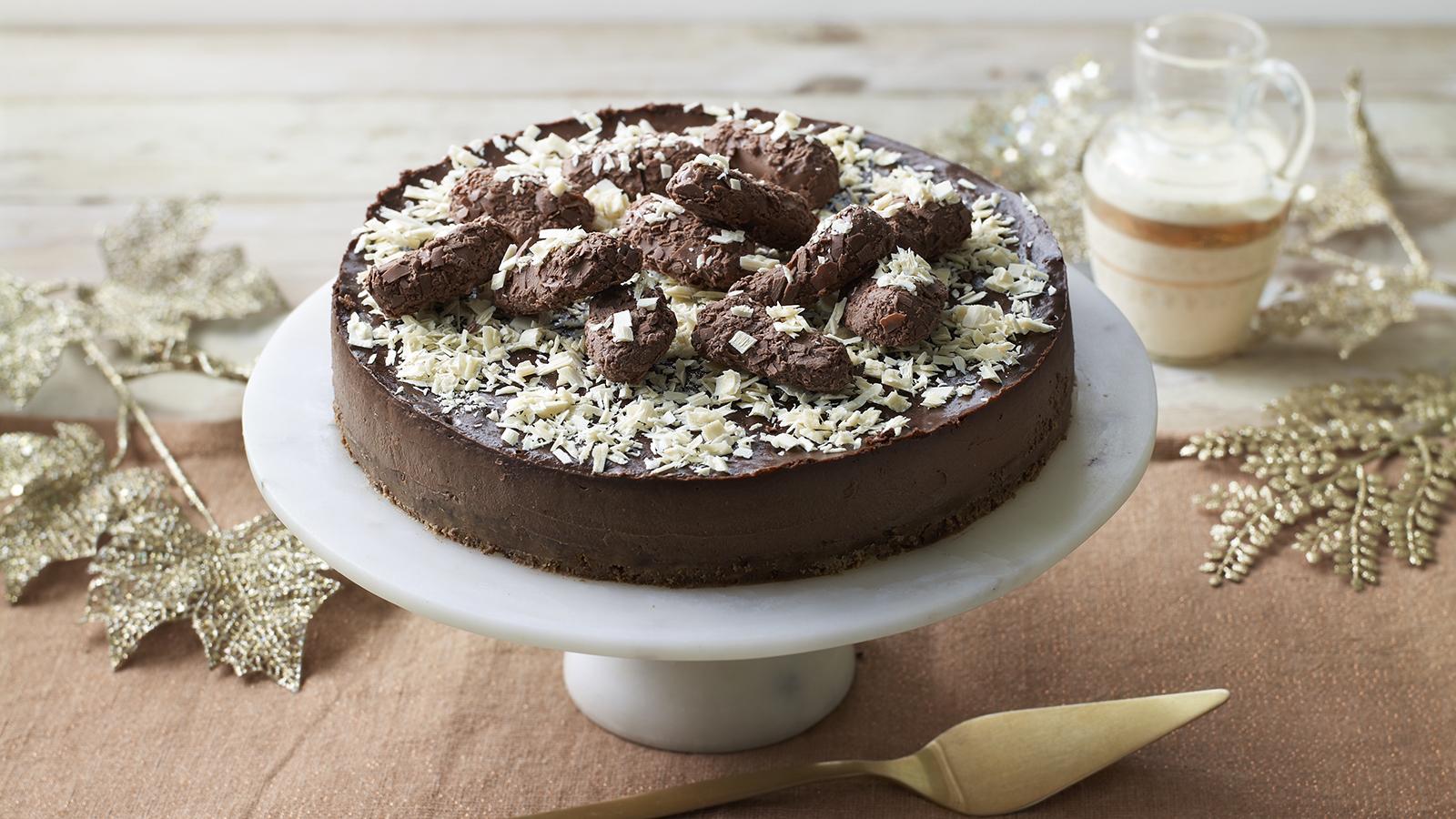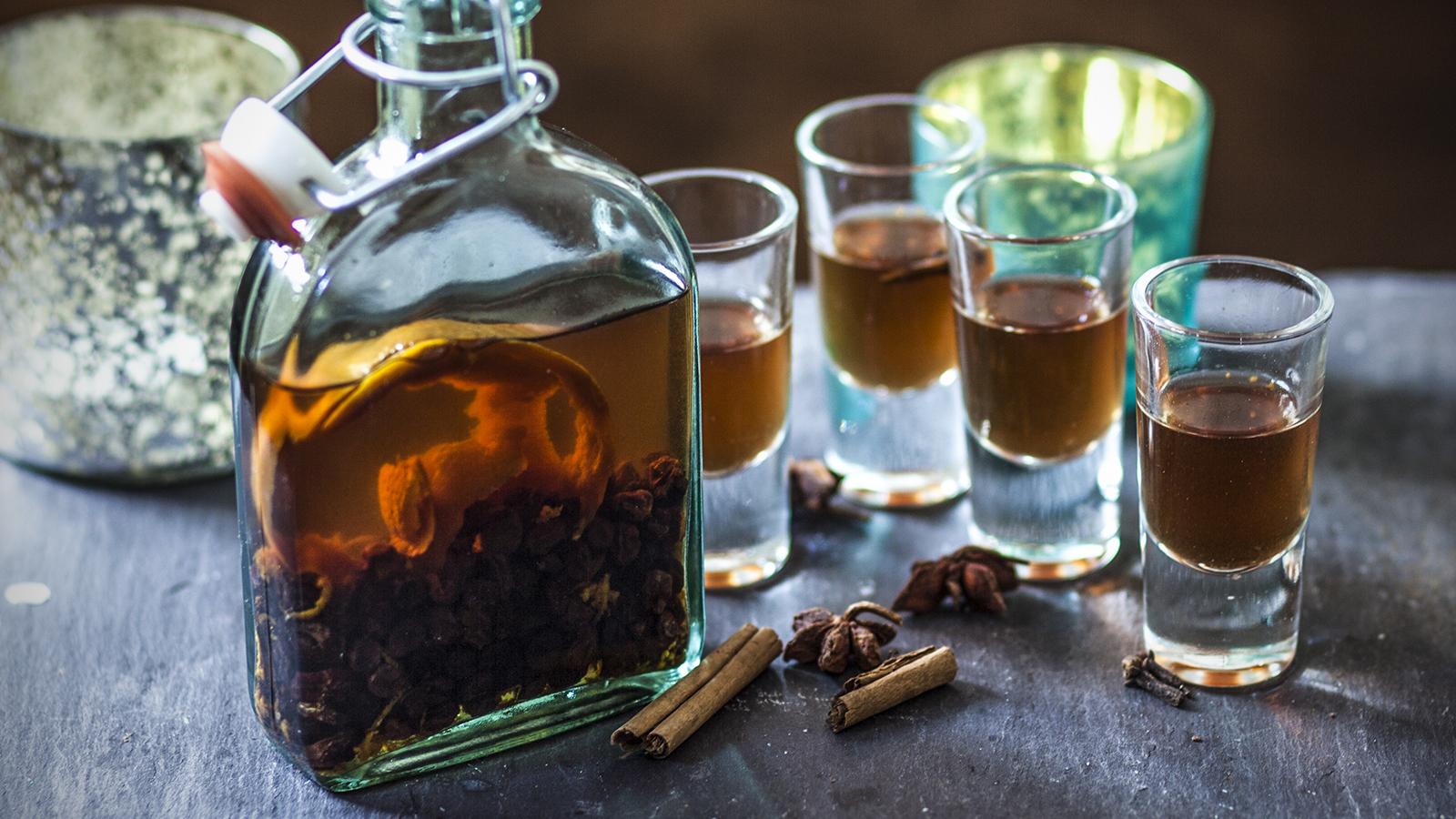Honey-glazed gammon
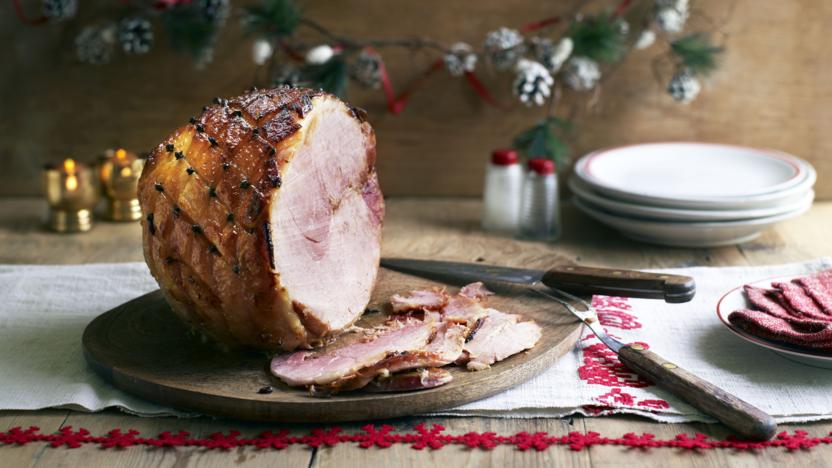
- Prepare
- less than 30 mins
- Cook
- over 2 hours
- Serve
- Serves 10
Of all our gammon recipes, this is a festive classic. The Hairy Bikers know a honey-roasted gammon joint is a must-have for a Christmas party!
Each serving provides 327 kcal, 36g protein, 10g carbohydrates (of which 10g sugars), 15.5g fat (of which 5g saturates), 1.5g fibre and 4.9g salt.
Ingredients
For cooking the gammon
- 2kg/4lb 8oz unsmoked boneless gammon joint, tied
- 2 onions, halved
- 2 carrots, unpeeled, cut into 5cm/2in pieces
- 2 celery stalks, cut into 5cm/2in pieces
- 4 bay leaves
- 12 black peppercorns
- small handful cloves
For the glaze
- 4 tbsp runny honey
- 4 tbsp English mustard
Method
Place the gammon joint into a large lidded saucepan, cover with cold water and bring to the boil over a high heat.
Drain the water from the saucepan, add fresh cold water, the onions, carrots, celery, bay and peppercorns and bring to the boil once more.
Reduce the heat, cover with a lid and simmer the gammon and vegetables gently for 20 minutes per 500g/1lb 2oz. (If your pan is not quite large enough to cover the joint completely, turn the gammon over halfway through the cooking time.)
Remove the gammon from the water and set aside to cool for 15 minutes. (The cooking liquid can be strained and reserved for making soup for another time.)
Preheat the oven to 200C/180C Fan/Gas 6 and line a large roasting tin with kitchen foil.
Use a small knife to remove the rind from the gammon joint, leaving as much of the fat intact as possible. Score the fat in a diamond pattern, and push a clove into the centre of each 'X'.
Place the gammon into the foil-lined roasting tray, ensuring that the sides of the foil come halfway up the joint to contain any roasting juices.
For the glaze, mix the honey and mustard together and brush half of it evenly over the gammon, including one side of the joint.
Roast in the centre of the oven for 10 minutes, then take the joint out and brush the top and remaining side with the rest of the glaze.
Return the gammon to the oven for a further 10– 15 minutes, rotating the tin so that the opposite side of the gammon faces the back of the oven.
The gammon is ready when the fat on top is glossy and golden brown. Cover loosely with foil if the top begins to look too brown. Remove the gammon from the oven and set aside to rest for 15 minutes before carving.
Pour any juices that have collected in the kitchen foil into a small pan, and warm through gently.
Carve the gammon, serve on a large platter and spoon over the warmed juices .
Recipe tips
Gammon joint cooking time: Simmer 20 minutes per 500g/1lb 2oz
If the gammon is to be served cold, remove the joint from the fridge and allow to come to room temperature for 30 minutes.
Should I soak gammon before cooking?
Soaking used to be an essential step due to the heavy salting used to preserve the meat. In the UK, supermarket gammon is unlikely to need any additional soaking, but a more artisanal one, or a ham from a butcher, could well need soaking before cooking.
To be sure, cut a small piece from one end of the gammon and quickly fry for just a couple of minutes on each side, then taste. If it is very salty, the gammon will need soaking in a large pan of cold water for 8–12 hours (this should be done in the fridge). If not too salty, it can be brought to the boil in a pan of water, then drained and refreshed with more water before starting the cooking process.
Make ahead and freezing tips
Gammon can be cooked ahead and then served cold or reheated to serve. Once cooked and cooled, cover with cling film (or baking paper and foil) and chill in the fridge. Don’t carve ahead of time or the meat could dry out.
Remove the joint from the fridge roughly 30 minutes before you need to carve it. Cut into slices and place on large microwavable plates. Sprinkle with a little water, cover and reheat in the microwave on HIGH, turning the meat every 90 seconds. Eight slices of ham will take 3–4 minutes to reheat.
You can also reheat the sliced ham in an oven. Put the ham on a rack sat in a roasting tin. Add around 200ml/7fl oz of just-boiled water to the tin, cover tightly with foil and place in an oven set to 200C/180C Fan/Gas 6 for around 20 minutes. The steam created will help keep the ham moist.
Keep leftover ham, uncarved as much as possible, in the fridge and carve as needed. Ham can also be wrapped tightly in foil and frozen for up to 1 month. Defrost overnight in the fridge and use for cooked dishes such as pasta bake, or ham and pea soup.
Do I have to boil gammon before roasting?
It’s not essential to boil a gammon before roasting, but it’s almost certain to result in a more succulent ham. Aim to simmer the gammon for 20 minutes per 500g/1lb in a large saucepan, then roast for a further 20–25 minutes, or until the fat is browned and any glaze is glossy. If you do decide to roast only, aim to cook at 180C/160C Fan/Gas 4 with around 200ml/7fl oz water at the bottom of the tin. Cover the gammon and the tin tightly with foil to help retain the steam and keep the meat moist.
How long does gammon take in the oven?
If you cook the gammon in the oven only, it will take 25 minutes per 500g/1lb at 180C/160C Fan/Gas 4. Take it out of the oven and, after cooling for a few minutes, carefully remove the foil and cut off the rind (skin), leaving a thick layer of fat covering the meat. After scoring and glazing, return the meat to the oven and cook at 200C/180C Fan/ Gas 6 for a further 25 minutes.
How can I tell if my ham is ready?
Make sure it is piping hot throughout or holds a temperature of 70C for 2 minutes using a digital food thermometer.
What to serve with gammon?
Cooked gammon is delicious served as part of a Christmas lunch, or can make an easy meal for anytime over the festive period. It’s great served with mashed potatoes and parsley sauce, carrots and a green vegetable such as broccoli. It can also be cooled and served with salad and a jacket potato, or carved for freshly made sandwiches with, or without, cheese and a good pickle.
What is gammon?
Gammon is the name given to ham before it is cooked. The meat comes from the hind leg of a pig and is cured and then either smoked or left unsmoked. It is usually sold without a bone and tied with string, or secured with a net. It must be cooked before serving.



